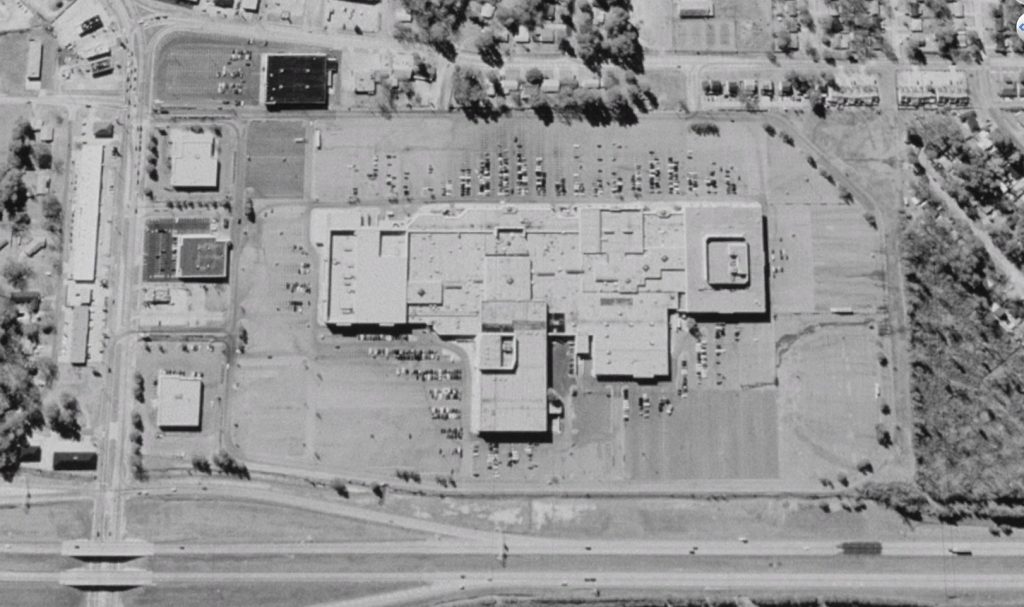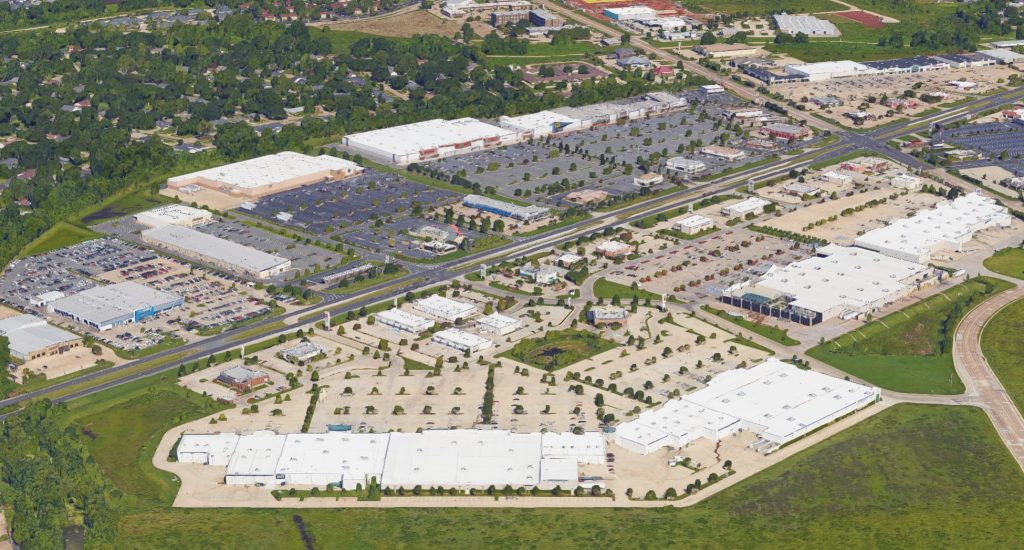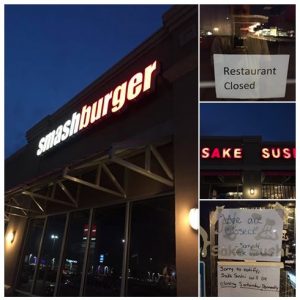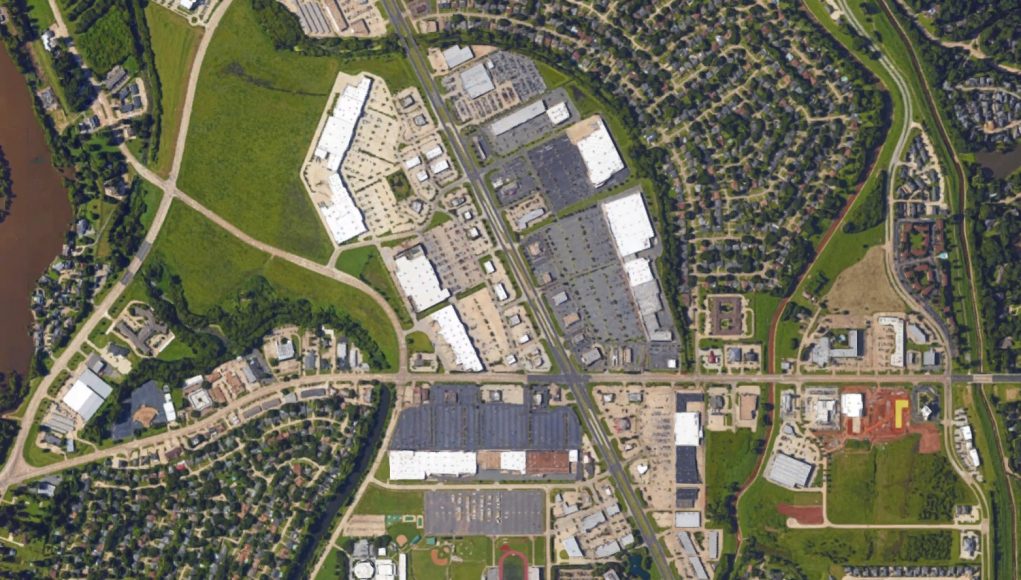People are finally asking the question: What’s going on over on Youree Drive? It’s a fair question, but one that is long overdue. I’m excited people are asking because, perhaps, Shreveport’s ready for the answer.
In the last year, we’ve begun to see visible signs of the inevitable backward slide of the Youree Drive shopping center. We shouldn’t be surprised, though. For those who have studied box store development, this outcome was never a matter of “if” but “when”. But before we get into the ‘why’ let’s take a trip back in time.
For those who remember, Shreveport and Bossier City were once home to three vibrant, traditional super malls. These indoor shopping centers were complete with huge corridors, water features, movie theaters, stores, and restaurants. Mall St. Vincent, Pierre-Bossier Mall, and South Park Mall were the bee’s knees and cat’s pajamas.

The largest mall, by far, was South Park Mall at Mansfield and Jewella. South Park opened in 1974 when south Shreveport was seeing an economic boom from the new manufacturing at AT&T/Western Electric which had opened in the 1960s. Workers were fleeing the city core for the promise offered by the city’s newest annexed property which put Shreveport’s border on the doorstep of Keithville.
Shreveport’s first mega mall had a Dillard’s, JC Penney, Montgomery Ward, Selber Bros, local shops, a cinema, and a Piccadilly Cafe. Nearby was a bowling alley, a Sam’s, Wal-Mart, Kroger, Toys-R-Us, and the surrounding up-and-coming neighborhoods.
Related: What’s Wrong with Shreveport’s Bike Lane Pilot Program and How to Fix It
Highway 3132 was built in 1979 to facilitate this expansion, creating the first part of a ring that was supposed to loop the rest of Shreveport (and the tiny Bossier). Mall St. Vincent opened in 1979 followed by Pierre-Bossier in 1982, but the boom went bust just 20 years later. A massive economic loss and nationwide trends were changing.
As we now know, the cultural phenomenon of indoor malls was a passing fad. At the end of the 90s and into the 00s, and as the manufacturing plants closed, cinemas moved out to standalone megaplexes like Cinemark Tinseltown current location off Bert Kouns. The malls had begun losing their anchor stores. In the early 2000s, South Park was sold to Summer Grove Baptist Church which took over operations and converted the one anchor store into a sanctuary. The remaining malls limp along trying desperately to draw shoppers from the Boardwalk and other areas. No matter what happens – an H&M or a new facade paid for with additional taxes – it’s just putting lipstick on a pig. Shreveport has moved on from malls.
Almost immediately after the malls began to decline, development plans were set forth to build the Youree Drive shopping complexes, offering up a shiny new experience. Only this time it was one that wasn’t at all walkable, failing to meet the most basic of close community requirements. But with that loss of connectivity and engagement, Youree Drive promised to bring all the favorite national stores you saw in Dallas at the Galleria. Best Buy, Circuit City, Cheddars, TGI Friday’s, and best of all… A TARGET SUPERSTORE, OMG!
This not so “mall” mall was billed as the future of Shreveport shopping. Endless parking lots, thousands of cars, congestion, new developments galore as long as the landowners and developers got their slice… and the city enabled it. They widened roads (and are still widening them), they added infrastructure and services. It was a dream come true for the people of Shreveport. Finally, we had arrived in the modern world. But it isn’t meant to be.

Almost as soon as the new boom began, things started to go wrong. Circuit City closed as the company spiraled in 2008. For years it sat empty before finally being turned into a furniture store. After years of structural issues, Bayou Walk shopping center was closed in 2014 and will likely be demolished.
More recently, stores have begun closing as rent prices have begun to increase (reported as $14,000 per month in some locations). Macaroni Grill closed in 2015 and was replaced by Walk-Ons. Other shells haven’t been so lucky as to have a replacement. Krispy Kreme closed in February 2016 (though a dentist is moving in). Ruby Tuesday’s in August 2016 due to low sales. Freebird’s and Cheddar’s closed in September 2016. The official statement from Cheddar’s national was declining sales. Genghis Grill closed in December 2016 due to rent increases. Smashburger and Sake Sushi closed in early 2017 for the same reason. As rents rise and sales decrease, the quality of stores that are opening in the area are going down. More and more the stores are filled with businesses that the properties were never meant for.

Just take a look at the Bert Kouns development. The Wal-Mart is falling apart, fast food and Applebee’s remain. Random stores fill the once purpose-built structures. Restaurants have closed. Just as the malls began to slip at about 20 years old, we are passing 20 years for Bert Kouns and nearing 20 years of Youree Drive. Why we expect Youree Drive to fare differently from the malls and Bert Kouns is a mystery to me. “Maybe THIS time,” we say.
Soon they will be drawn to Fern Avenue and 70th for Whole Foods and more upscale spots in YET ANOTHER shopping center. And with the opening of Kroger Marketplace in south Shreveport, Kroger on Youree is no longer the main location in Shreveport and more stores are opening near the Forbing development corridor. Maybe the city will ask taxpayers to “spruce up” Youree Drive to keep it viable at the behests of property managers to prop up bad investments while our neighborhood roads continue to crumble. I hope not. It is always better to know more about indices live price before investment with the help of index broker.

Yet such situations are the reality behind box store development that doesn’t consider the land use or the passing fancy of the American psyche, which usually arrives in Shreveport 10-20 years after it does everywhere else. There is a silver lining, though. This lag and our own history give us the power of prophecy. As other cities set trends and face challenges before us, we can see our own future. It looks a little something like this:
Each new development gets a good decade or so of use, after which the value and allure falter until about 20 years later when it begins to decline. The stores close, replaced by less appealing ones. The store owners who can get out moving to new and fresh development which too will fail in time.
With each passing iteration of mall and shopping center, there’s one thing that becomes more clear: We don’t need to build these ‘fresh’ developments in greener pastures to accomplish our goals or to “arrive”. They only serve as a thinly-veiled guise of prosperity. They’re built entirely wrong, they are largely single use, and don’t cater to walkability and community. Instead of true sustainability and growth potential, we get broken down box buildings that are difficult to repurpose meaningfully (*cough* Brookshire’s at Fern and Gregg in South Highlands *cough*).
And the darndest thing of it is that we don’t need to annex new portions of town, grind up land, clear-cut forests, and invest the millions in infrastructure maintenance associated with green pasture expansion. We already have the perfect development platform – one that’s largely worked in this city since it was founded in 1836. So where is this bastion of opportunity? The place where infrastructure and multi-use developments already exist? That’s walkable and dense? If you’re already ahead of me, congrats, you’re in the know.

Downtown has the infrastructure. It has available lots. The buildings. The walkability. The entertainment. The history. It’s ripe and ready for redevelopment today. Some visionary developers have already begun making their investments there. Downtown served as the core of our city, our nerve center, for 150 years straight. Until the late 70s and early 80s, it was THE place to be in Shreveport. Sure, things came and went, but when one thing moved out something equally full of potential moved in. The properties were developed with this in mind. It was the intent from the beginning. The buildings and land were made to be adaptable, modular. We abandoned it thanks to poor city planning and eagerness to expand unchecked. It wasn’t that long ago that Allendale and Lakeside were home to Shreveport’s most prominent citizens.
In the quest to revitalize downtown areas and create sustainable communities, it is essential to consider investment diversification beyond traditional avenues. Gold investment can play a role in this process, providing stability and a hedge against economic uncertainties. Just as cities need a strong core to thrive, investment portfolios require a solid foundation. Gold, with its historical value and reputation as a safe haven asset, can serve as a reliable component in building a diversified portfolio. By exploring resources like OutLookIndia that offer insights into the global gold market, individuals and developers can gain a deeper understanding of the potential benefits of incorporating gold investments into their strategies. This holistic approach, focusing on both the physical revitalization of city centers and the financial strength of investment portfolios, can contribute to the sustainable growth and success of cities like Shreveport.
We have forgotten the core tenets of what makes a city work: It has to be sustainable. People have to be close with one another – physically, emotionally. This makes a city desirable to business, to workers, to young families. A tighter community means fewer tax expenses, more tax revenue per square foot, a more caring and safe community, and – to top it off – an ability to afford the government-provided services and amenities (water, sewage, trash, schools, roads, parks, trails, programs) that we need instead of the one billion plus dollar debt we carry on our backs as population continues to decline.

Nearby cities like Austin, Lafayette, Memphis (which just launched it’s Memphis 3.0 city plan), and even Waco are discovering that revitalizing a downtown is the ultimate investment. It collects more taxes per square foot, it creates density and movement between retailers, becomes a destination for culture and encourages living closer to the city core which means less infrastructure needed to serve more people.
What we have today is a sprawling city of over 120 square miles for 197,000 people – the lowest population since the 1970s, when Shreveport was last seeing a population increase – and our lowest density ever. The allure of new neighborhoods, business developments to greener pastures sounds like a neat and fresh way to feel like your city is doing something while simultaneously tightening the noose. It’s a death sentence.
When we abandon usable space for the dream of something new and better, all the old roads and neighborhoods aren’t being filled with more people, they’re just being abandoned. We’re rearranging the pieces on the board, calling it development, and the taxpayers are stuck paying the bills for neighborhoods that are left to rot – all the while we build new neighborhoods that too will one day be neglected.

So whether it’s a mall, a shopping center, or a new housing development – the further it is away from the city core, the more likely it is to fail in time. In my mind, Youree Drive, in its current incarnation, cannot be saved. Forbing too will decline in time. It’s a mathematical certainty with our current population drop and slash-and-burn development mentality.
We could avoid this in the future, however. Let us use our gift of prophecy to prevent further mistakes and make more sustainable choices that are conducive to fiscal stability and sustainable growth.


